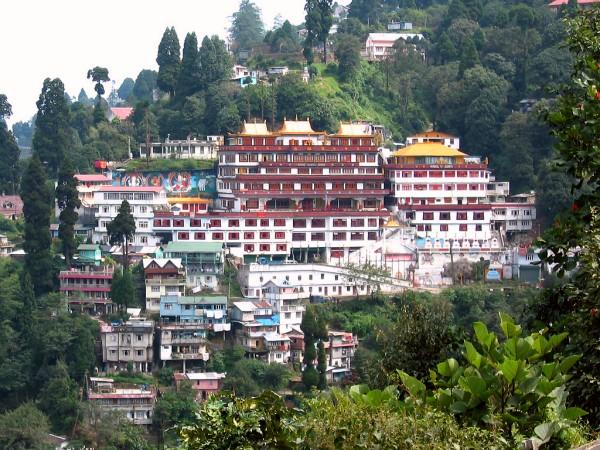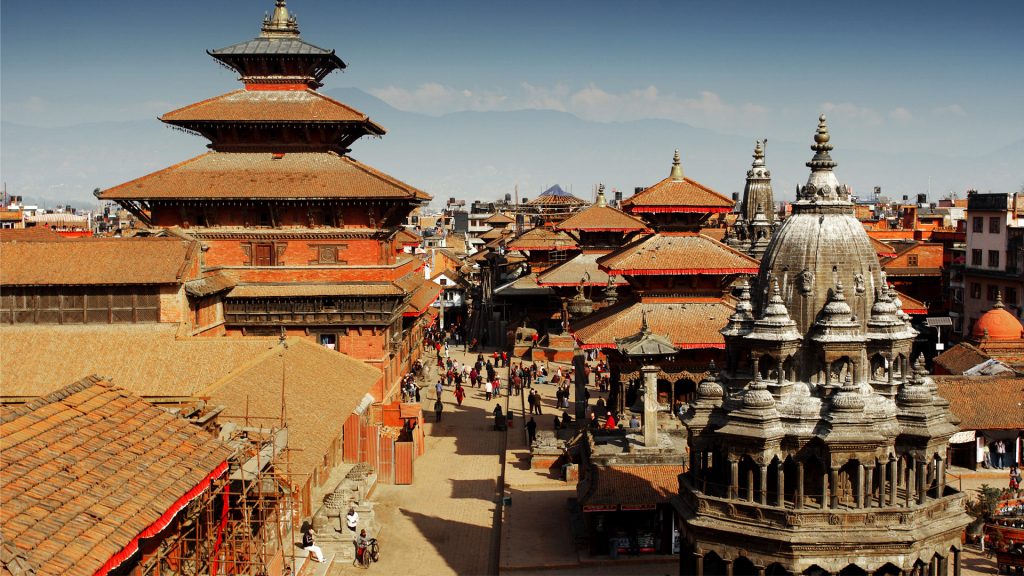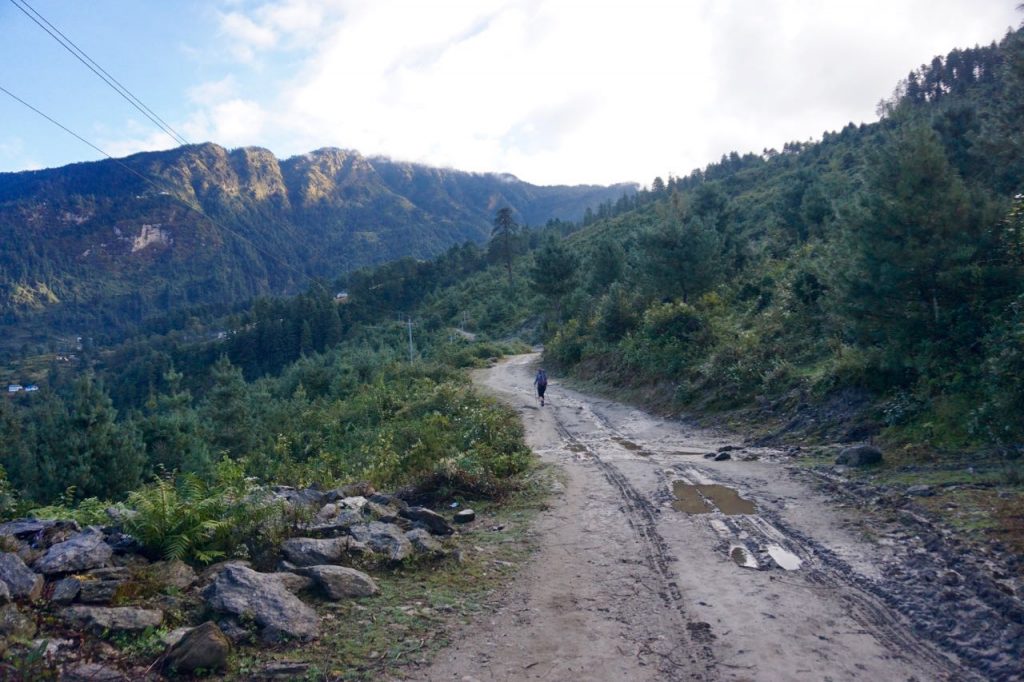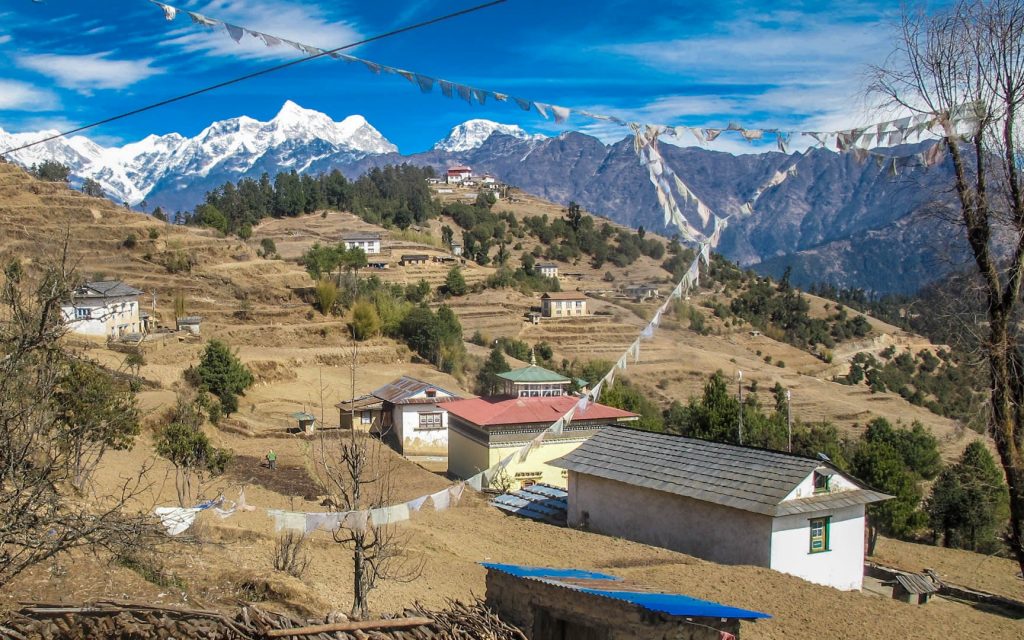Lower Solukhumbu also known as the land of Sherpa’s is a fantastic trekking destination for those who want to admire the magnificent Himalayas and observe the natural diversity and ethnic culture of the lesser explored lower Solukhumbu region. The Lower Solukhumbu Cultural Trek takes you through the rhododendron forests, Buddhist monasteries, and traditional Sherpa villages which show you the stunning beauty of this fantasy-like village. Interesting stops during the trek also magnificently add to the charm of the region. Lower Solukhumbu Cultural Trek for families starts with your arrival in Kathmandu. From Kathmandu, you fly to Phaplu and start trekking.


The trail is fairly easy as you walk through the forests and cross suspension bridges. En route, you will see traditional villages and Mani walls as well as prayer flags which symbolize the religious rituals and values practiced in the region. During this journey, you visit many Buddhist monasteries like Taksindu Gompa and Phungmuche monastery and observe the Sherpa way of life. The Sherpa people are very welcoming and will amaze you with their heart-warming hospitality. You will spend a complete day in Junbesi exploring the village and witnessing the culture of the locals. From there, you trek back to Phaplu and end the trek.
The trek route is filled with the breathtaking views of the snow capped mountains like Number (6959m), Karyolung (6511m) and many other Everest Himalayan ranges. Autumn (September to November) is an excellent time for this trek as the skies are clear and provide great views. You can also trek (March to May) where the wildflowers bloom. The best known and most admired of all of Nepal’s ethnic groups, the Sherpas migrated to the high valleys south of Mt. Everest from eastern Tibet about 450 years ago. The name Shar-pa means ‘people from the east. Their Tibetan origins are reflected in their language, customs and religion. The Sherpa homeland is dominated by old mountain gods, the most sacred of these being Number in Solu and Khumbi-la in Khumbu.
This 35 year old monastery lies in Beni and is about 5 hours away from the Phaplu aerodrome. The smells of pine and the sight of the monastery give off a sense of serenity and peace. The natural beauty of this area is further enhanced by the variety of flowers and plant life like Buki, Rhododendron and Pine. The monastery is popular as a centre of religious tourism and its reputation has further been boosted by the fame of Thulsuk Rinpoche.


About 3,500 Sherpa people reside in various settlements within the park. The Sherpa people originated in the eastern Tibetan Province of Kham. They left their original home in the late 1400s or early 1500s crossing over the Nangpa-La into Nepal. The Sherpa people follow the Nying-mapa sect of Tibetan Buddhism. The famous Tengboche and other monasteries are the common gathering place to celebrate religious festivals such as Dumje and Mani Rimdu.
The economy of the local Sherpa community has traditionally been agriculture, livestock herding, and trade with Tibet. Since the 1950s, mountaineering expeditions have attracted tourism in the region. The local economy is becoming increasingly dependent on tourism.
You will have a sightseeing tour around Kathmandu valley which takes in the key attractions in and around Kathmandu. Including AM: Visit 2000 years old Buddhist shrine Swayambhunath, situated on the top of the hill west of the city the most popular and instantly recognizable symbols of Nepal. The temple is colloquially known as the “Monkey Temple”. There are many small buildings and shrines down the hillside behind Swayambhunath.


Explore the colorful Kathmandu Durbar Square – The Old Royal Palace of Kathmandu, Temple of living goddess Kumari, the Jagannath temple, and 17th century temple known for colorfully painted erotic carvings, Kasthmandap temple a three story temple built from a single tree in 12th century. Visit Pashupatinath temple, one of the most sacred Hindu shrines in the World. The holy river Bagmati and the burning Ghats and also visit one of the oldest and biggest stupa of Boudhanath.
The sights from the plane are amazing, providing dramatic views of terraced hills and the distant Himalayan giants. After landing in the village of Phaplu, you will meet the rest of your staff and porters. The Phaplu is a small airstrip in Solukhumbu. You then trek over a gentle ascending path all the way to Takshindo Gompa.
The Trekking trail follows Chiwang and Phera through a pine tree and rhododendron forest alive with birds. It’s an easy descent through pines to a large suspension bridge over the Dudh Khola at 2510m. From the river the trail snakes up through meadows to Ringmu; a Sherpa village dotted with apple, peach and apricot orchards. Today have some leisurely stroll in the village and spend your night.


You will wake up early in the morning and hike to Taksindu-La (3870 m).The trail climbs steeply through the rhododendron and pine forests to a long Mani wall in the hamlet of Pangoma. Your destination is the Buddhist monastery of Taksindu Gompa, which was established by the monks from Tengboche. After having lunch here, you will head back to Ringmu.
You will climb down a beautiful alpine meadow and cross the river on a suspension bridge. The trail then ascends through a pine forest and takes you to a wooden bridge up ahead. After crossing the bridge, you will make your way to Junbesi. In this route, you can see the views of Kangtega (6,782 m), Kusum Khangkaru (6,367 m) and Mera Peak (6,476 m).
You do not track further today. However, you will still make a short walk to the Thupten Choling monastery which is a couple of hours away. The mountains make the constant appearance in the backdrop as you continue your exploration. In the evening, you can explore the village of Junbesi and observe the daily life reflecting the culture and religious faith of these inhabitants.
This is your last day of trekking. The trail slowly climbs downhill until Benighat along the Junbesi Khola. The trek goes through numerous villages and you also get to cross many streams and rivers along the path. The trail then climbs steeply all the way to Phaplu. You can explore the village on your final day in the lower Solukhumbu region.


Today you fly back to Kathmandu. Upon arrival, you check into your hotel room and relax. You can go out and explore the capital city and do some shopping in the streets and local markets. You can also visit some of the famous places in the valley. Kathmandu, home to astounding seven world heritage sites, is famous for its cultural and religious allure among the tourists all around the world.
Shopping is my option in contrast to Red Bull. Regardless…


Hundreds of years of preservation and perseverance, nourished and timely…
Among the many 12 years festivals Nepal has, Lha Phewa…